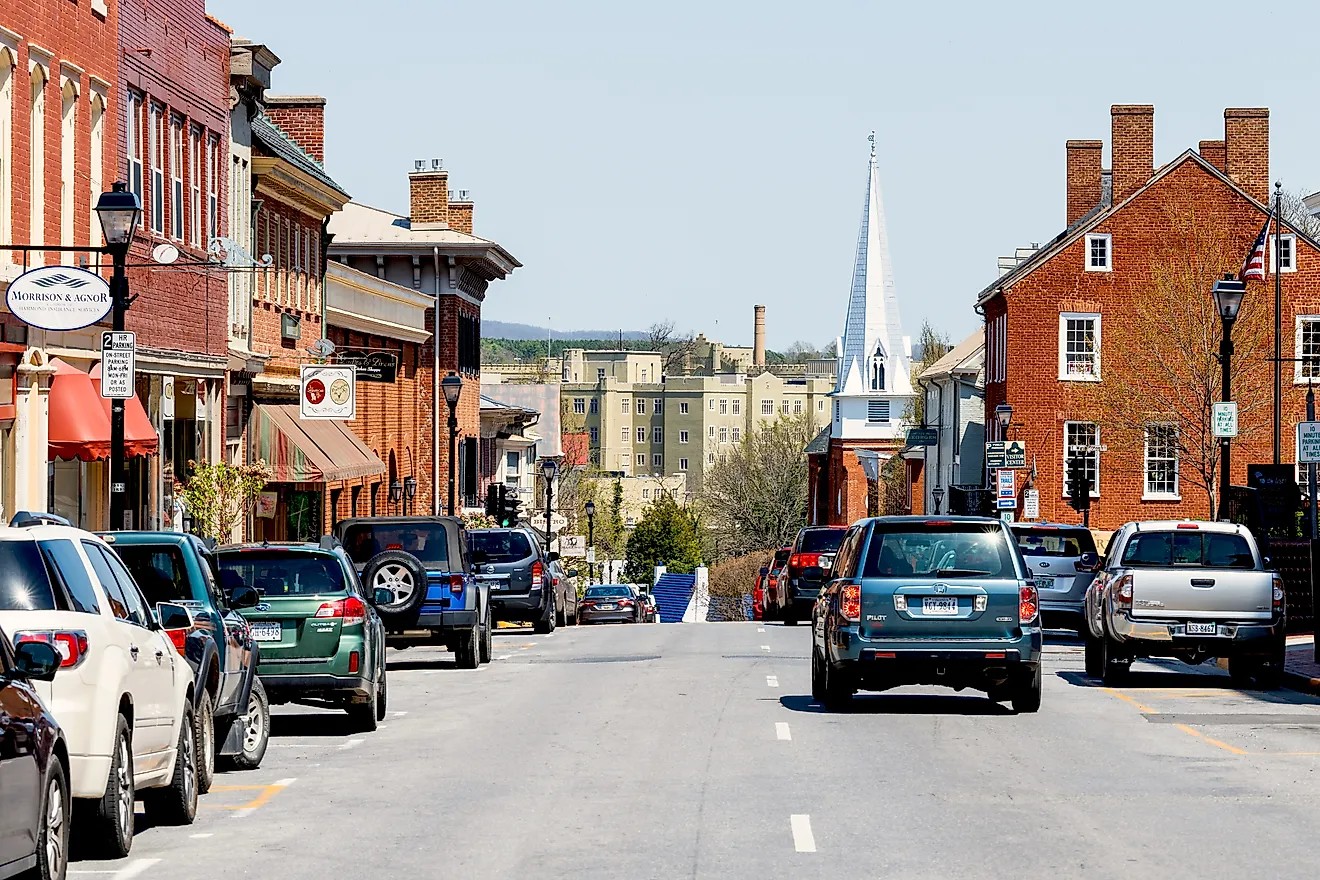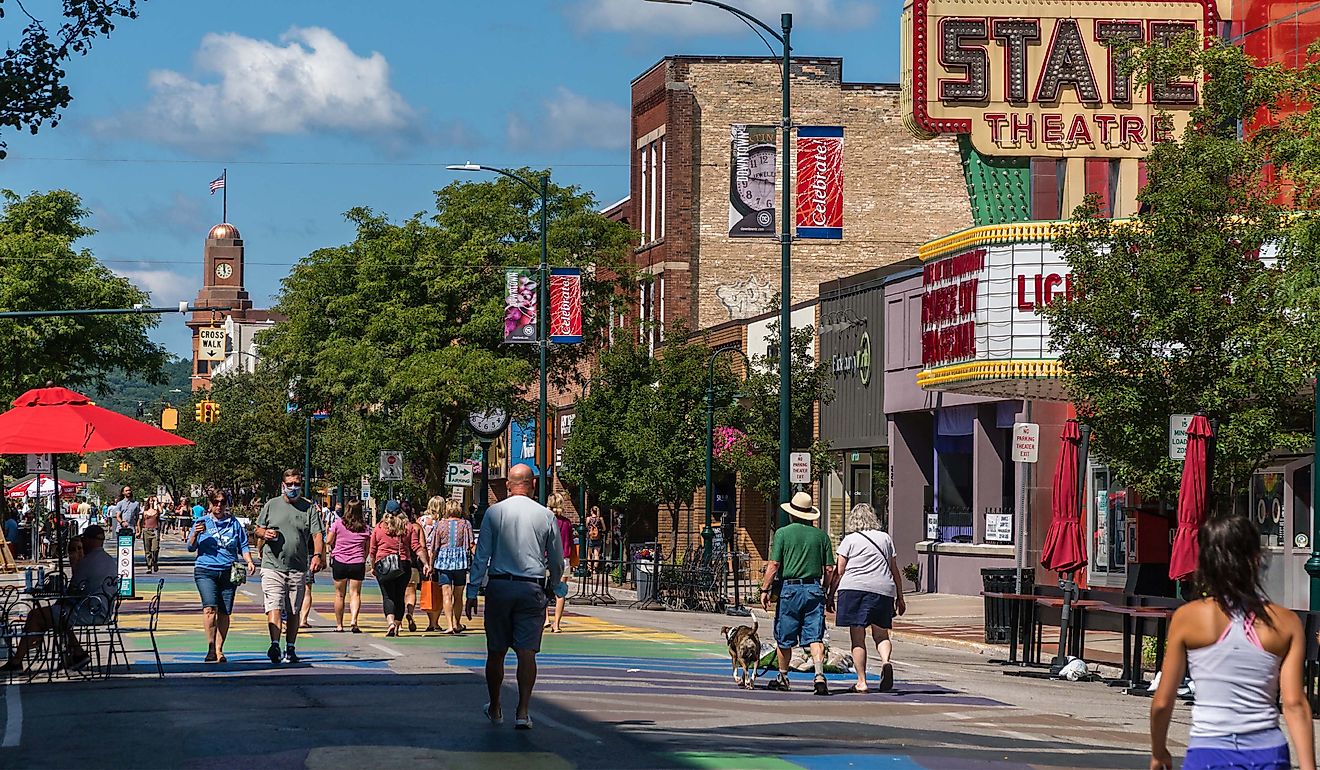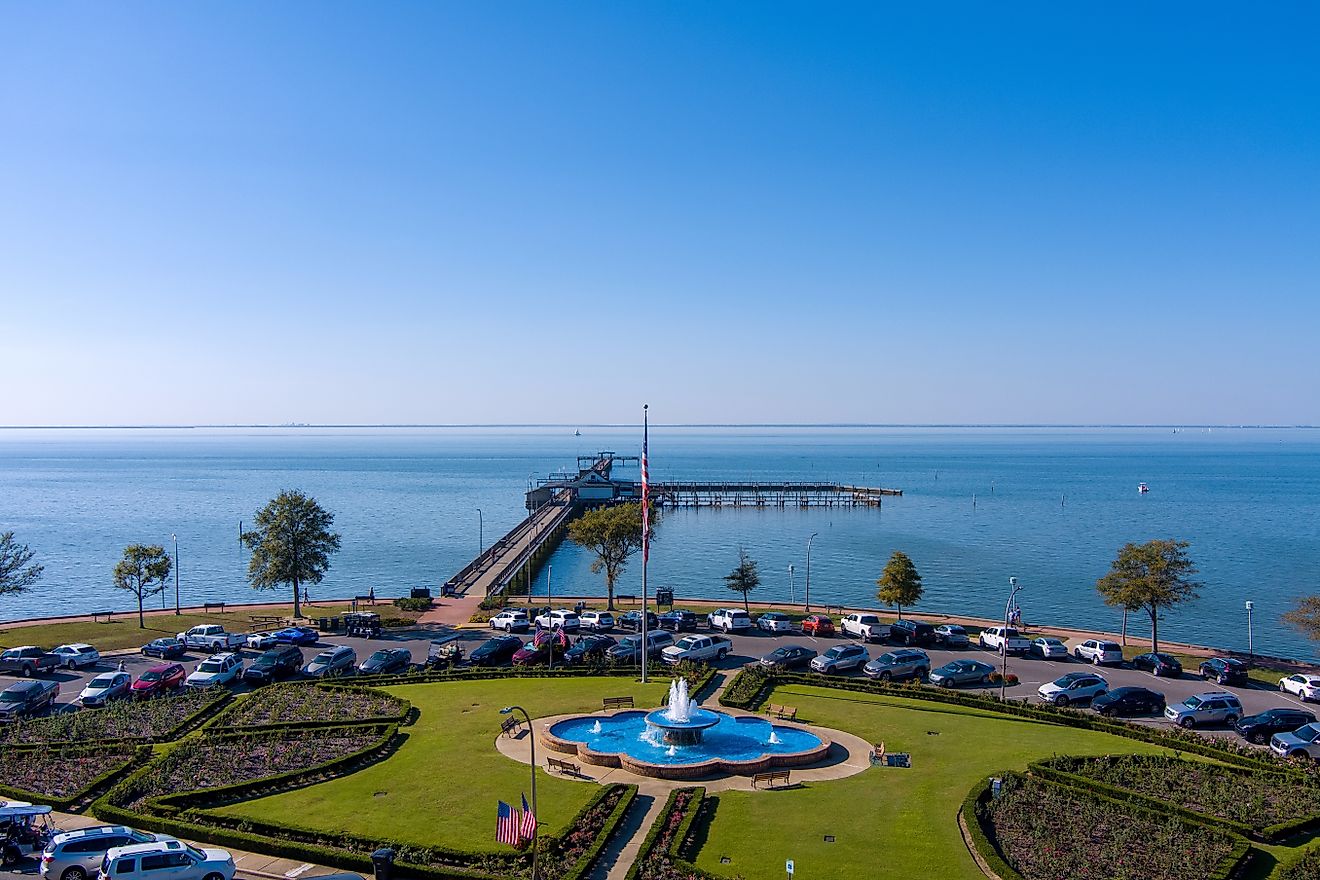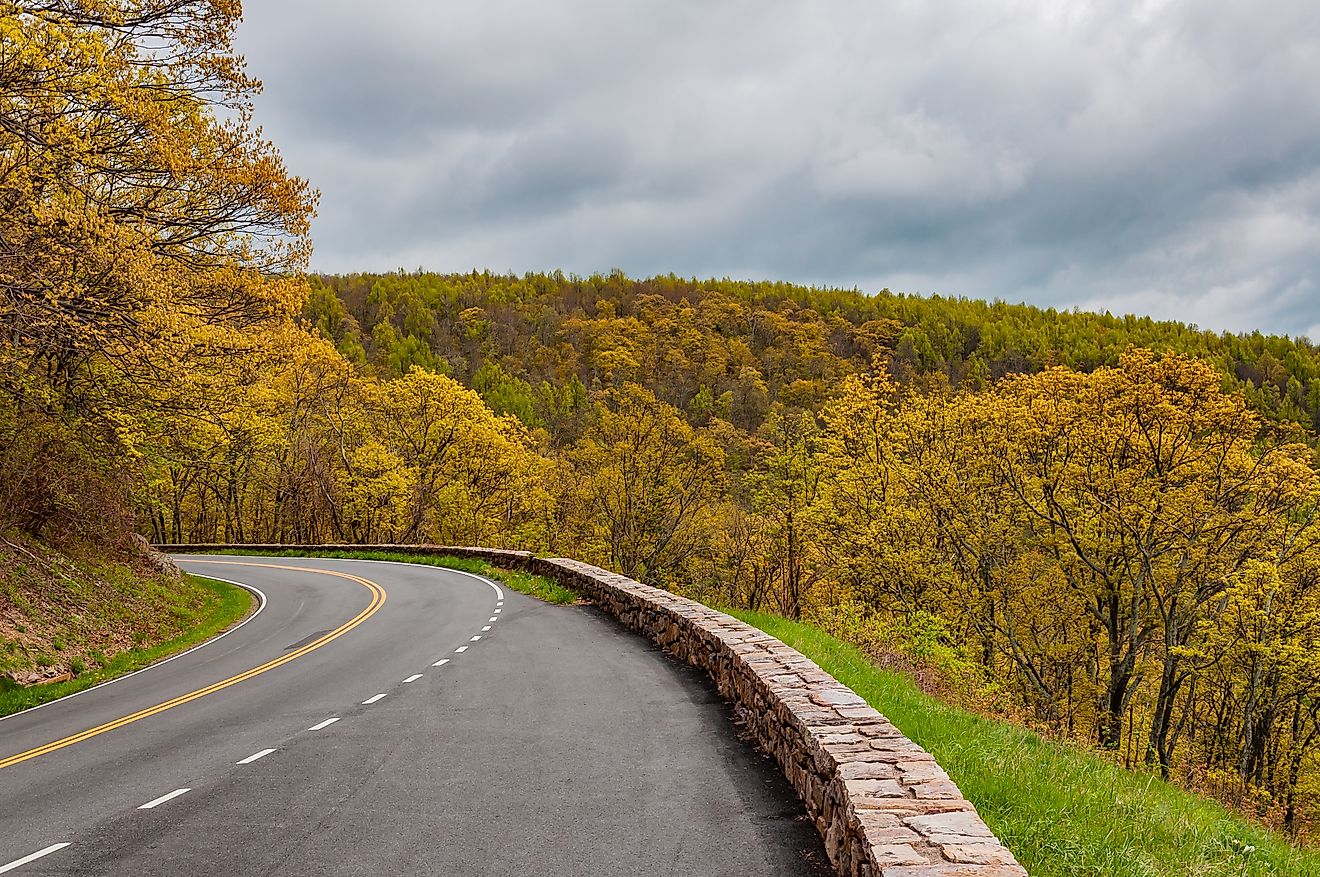Where Is The World's Highest Glass-Bottomed Bridge?
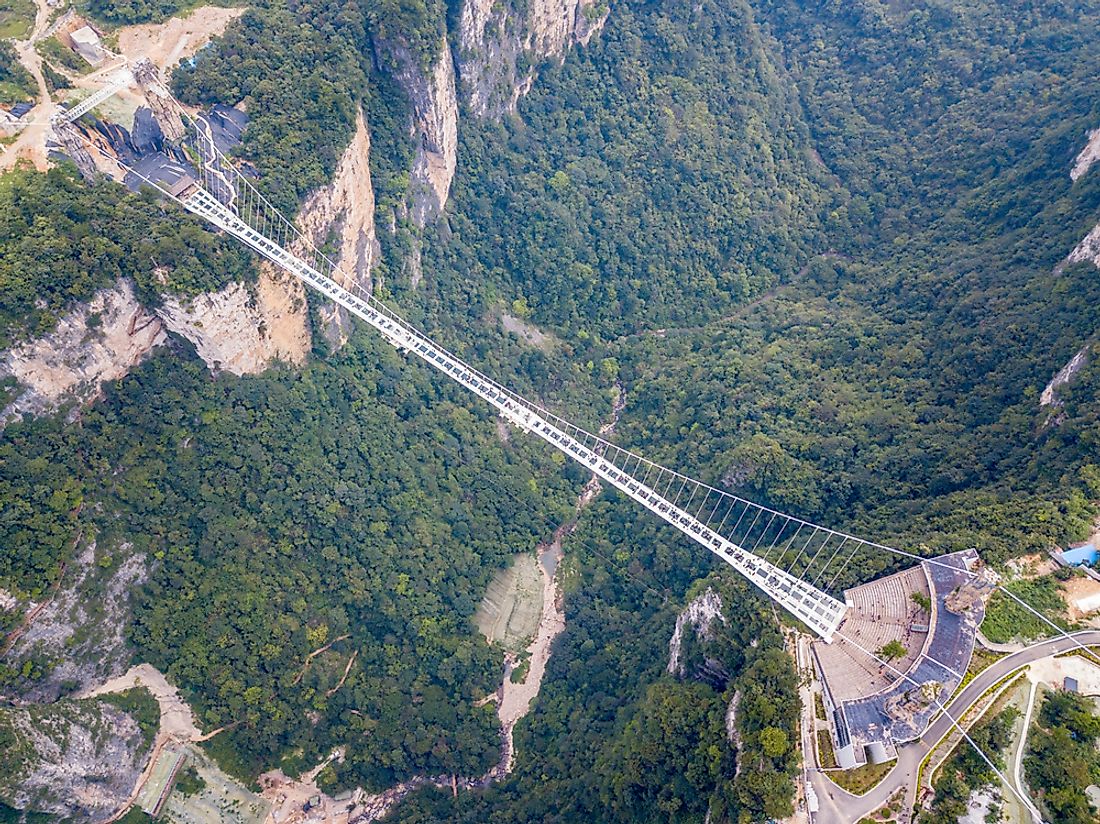
The world's highest glass-bottomed bridge, the Zhangjiajie Glass Bridge, is located in Zhangjiajie, China. The transparent bridge was built as a tourist attraction in Wulingyuan, which is a scenic and historical site that was designated as a UNESCO World Heritage Site in 1992. When it opened to the public in 2016, the Zhangjiajie Glass Bridge was the tallest and longest glass-bottomed bridge in the world. It surpassed the Columbia Icefield Skywalk Bridge in Jasper, Alberta, Canada, as the world's highest glass-bottomed bridge, but its length was later surpassed by the glass bridge in the Hongyagu Scenic Area in Hebei, China.
Zhangjiajie Glass Bridge
The Zhangjiajie Glass Bridge is a skywalk bridge that stretches over the Wulingyuan area in Zhangjiajie, Hunan, China. Opened to the public on August 20, 2016, the bridge is 20 ft wide, 1,410 ft long, and is suspended 980 ft above ground level. Stretching over a canyon between two mountains in Zhangjiajie National Forest Park, Zhangjiajie Glass Bridge was designed by Israeli architect Haim Dotan and its construction cost a total of $3.4 million. It can support 800 people at any given time, and also offers the opportunity for a 935 ft bungee-jump, which is considered to be one of the highest jumps in the world. According to the bridge’s management committee, Zhangjiajie Glass Bridge set 10 world records spanning its construction and design.
Authorities closed bridge 13 days after it opened due to an overwhelming number of visitors. The bridge was designed to support 800 individuals at once, and authorities expected about 8,000 visitors per day. However, the glass bridge quickly became a popular attraction that drew more than 80,000 people each day. As a result, the government closed the bridge in order to make updates and improvements, as well as adding a ticket-booking system, car parks, and improved customer service. The government reopened the bridge on September 30, 2016.
Location and Surrounding Area
The glass-bottomed bridge is located in Zhangjiajie-National-Forest-Park, which encompasses an area of 11,900 acres and was established in 1982 as China's first national park. The park was later designated as a UNESCO World Heritage Site in 1992, and a UNESCO global geopark in 2004. The most unique features in the park are the pillar-like formations that can be observed throughout the park. In 2010, officials renamed one of the park's quartz-sandstone pillars (Southern-Sky Column, which has a height of 3,540 ft) the "Avatar Hallelujah Mountain" after the Avatar film. Park officials claim that photographs of the park inspired the floating Hallelujah Mountain depicted in the film.
Construction and Safety
Zhangjiajie Glass Bridge was built from strong and durable materials. During construction, engineers erected four supporting pillars at the edge of the canyon walls, and the bridge was created using a metal frame and more than 120 glass panels. These panels are 3-layered and made of tempered glass slabs that are 2 inches thick. Engineers also attached 3 long swings to the underside of the bridge.
Zhangjiajie Glass Bridge is considered to be safe, and officials have staged various events to reassure visitors of its safety. For example, authorities invited various individuals, including BBC reporter Dan Simmons, to hit the glass panels with a sledgehammer, as well permitting a car with passengers to drive across the bridge.

